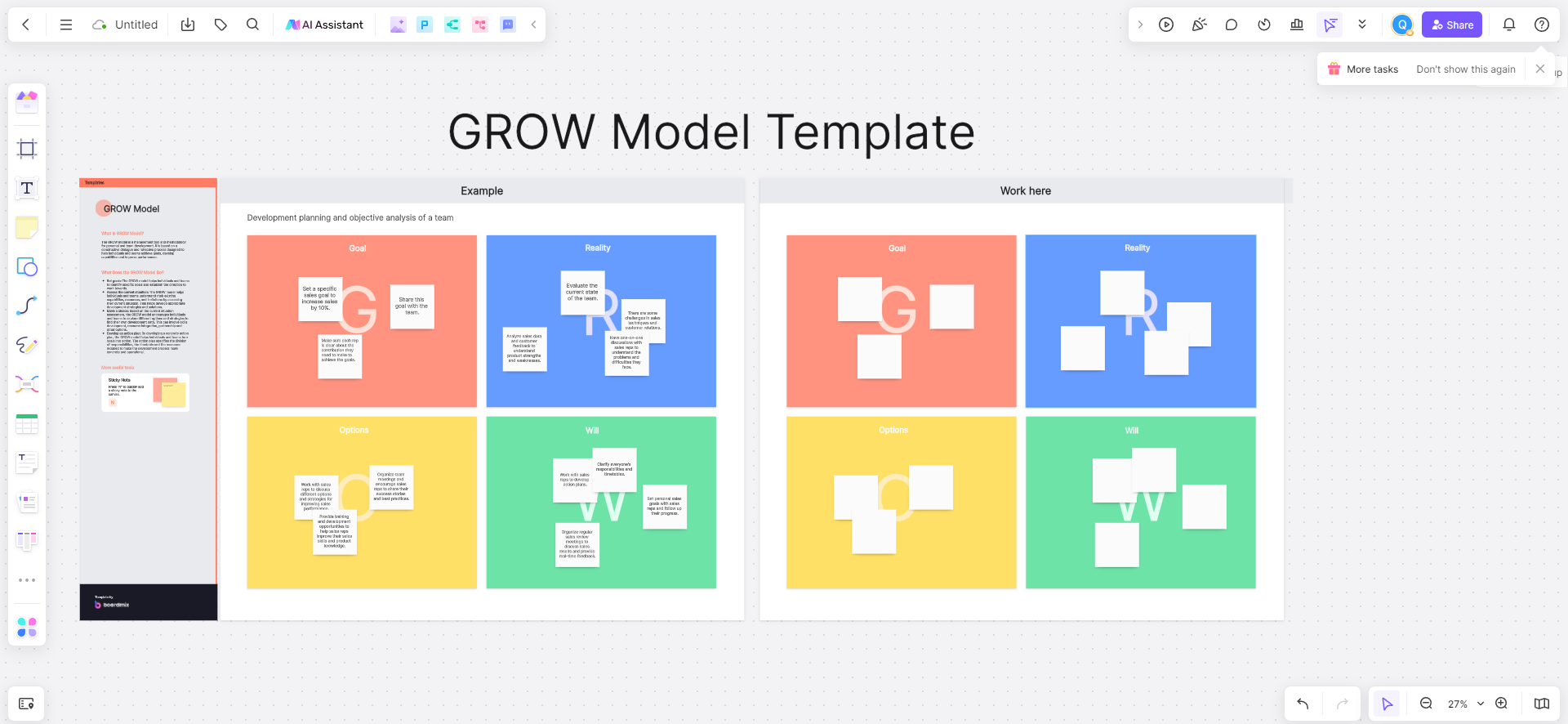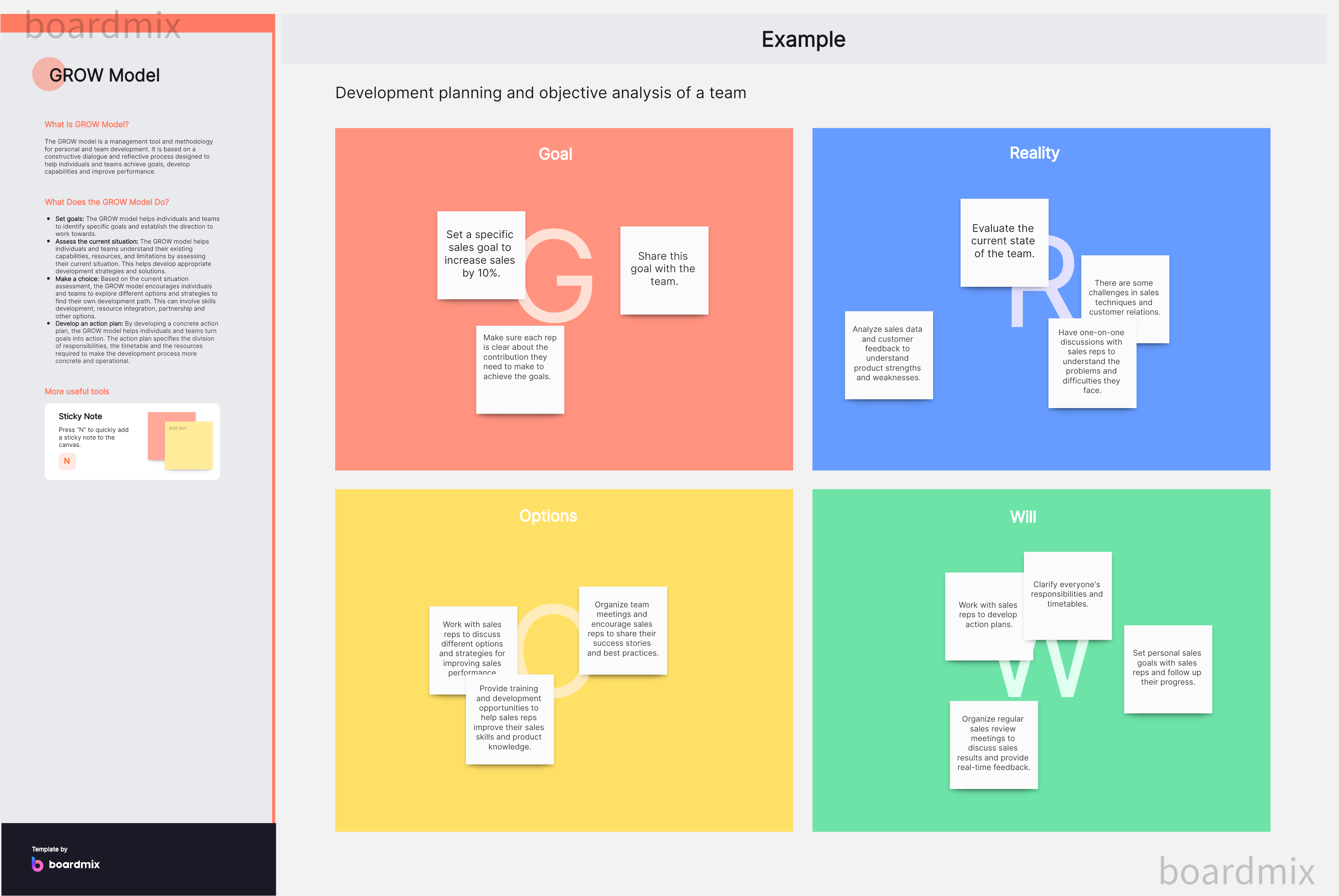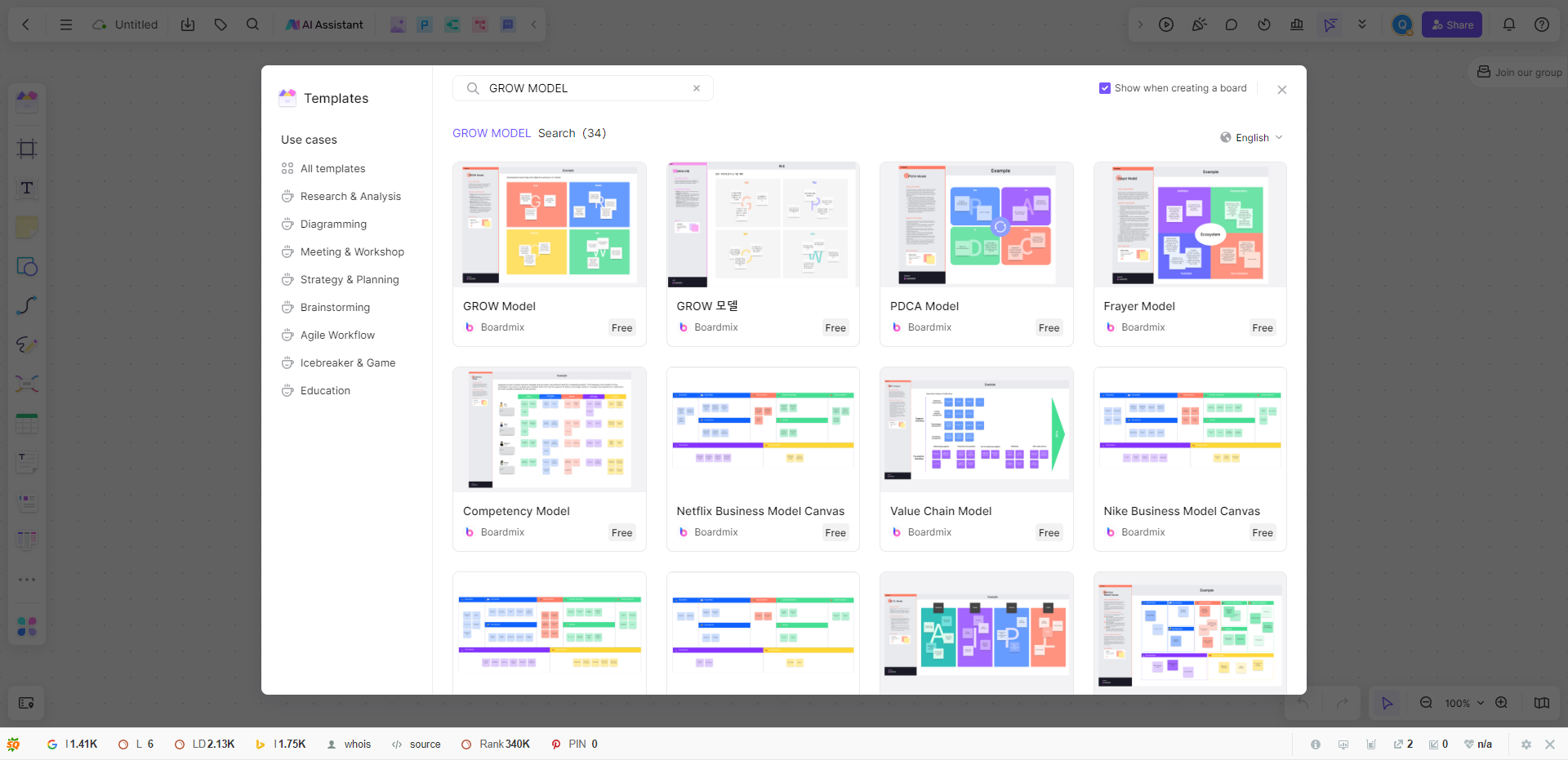Coaching is an art, and to perfect this art, coaches need proven methodologies. The GROW model stands among the most recognized coaching frameworks globally. Here is a comprehensive guide to understanding and implementing the GROW model in coaching.
What is the GROW Model?
GROW Model is an acronym for Goal, Reality, Options, and Will. Co-created by Sir John Whitmore and colleagues in the late 1980s, the GROW Model is a structured method for setting and achieving goals.
Goal: What does the coachee want to achieve? The first step involves setting a clear, specific, measurable, achievable, relevant, and time-bound (SMART) goal.
Reality: What is the current situation? This step involves understanding the coachee's present circumstances and challenges related to their goal.
Options: What are the possible ways to achieve the goal? Here, the coach helps the coachee brainstorm different strategies and approaches.
Will: What will the coachee do? The final step is to commit specific actions that will lead toward achieving the goal.

How to Apply the GROW Model in Coaching?
Goal Setting: Ask probing questions like "What would you like to accomplish?" "What does success look like for you?" Help your coachee formulate SMART goals.
Reality Check: Understand your coachee's perspective about their current situation. Ask questions like "Where are you now concerning your goal?" "What obstacles are you facing?"
Options Exploration: Facilitate creative thinking to identify potential solutions. Encourage the coachee to think outside the box through questions like "What could you do to achieve your goal?" "If there were no constraints, what would you do?"
Will or Way Forward: Help your coachee create a clear action plan. Encourage them to commit to specific steps with questions like "What will you do?" "When will you do it?" "What might get in your way, and how can you overcome it?"
Why Use a GROW Model?
The GROW Model is widely regarded as a beneficial tool in the coaching sphere. Here are the key benefits of using the GROW Model:
1. Structured Approach to Coaching
The GROW model provides a clear and systematic framework for coaching sessions. Each stage—Goal, Reality, Options, Will—guides both the coach and coachee through a logical progression, making the coaching process more effective and efficient.
2. Enhances Self-Awareness
As coachees work through each phase of the GROW Model, they are encouraged to reflect deeply on their current situation, ambitions, opportunities, and commitments. This process significantly improves their self-awareness, a vital attribute for personal and professional development.
3. Encourages Autonomy and Empowerment
By exploring various options and committing to a particular course of action in the 'Options' and 'Will' stages, coachees learn to take ownership of their decisions. This empowerment is often a key catalyst for change and personal growth.
4. Fosters Problem-Solving Skills
The GROW Model coaching not only helps in goal setting but also acts as an effective problem-solving tool. By examining their reality and exploring possible options, coachees improve their ability to tackle obstacles and challenges that may come their way.
5. Facilitates Clear Action Plans
In the final stage of the GROW Model coaching, coachees develop a clear action plan for achieving their goals. This plan enhances their focus, motivation, and commitment.
6. Adaptability
While the GROW Model provides a structured framework, it’s also flexible and adaptable to the needs of individual coachees or various contexts. This adaptability makes it a highly versatile tool for coaches.
The GROW Model has proven to be an invaluable tool in the coaching domain due to its structure, its empowerment of coachees, and its effectiveness in fostering self-awareness and problem-solving skills.
What are the Limitations of the GROW Model?
The GROW model is a popular tool in coaching due to its simplicity and effectiveness. However, like any framework, it isn't without limitations. Here are some of the limitations of the GROW Model:
1. Oversimplification of Complex Issues
While the simplicity of the GROW model is one of its strengths, it can also be a drawback. Some issues or goals may be too complex to be adequately addressed within this framework. In such cases, a more sophisticated approach may be necessary.
2. Dependency on Self-Awareness and Honesty
The effectiveness of the GROW model coaching is heavily dependent on the coachee's level of self-awareness and willingness to be honest about their realities and challenges. If a coachee lacks self-awareness or isn't fully transparent, the coaching session may not yield the desired results.
3. Assumes Rationality and Linearity
The GROW model assumes that individuals are rational and that the coaching process is linear, progressing neatly from goal setting to reality, then options, and finally will. However, this isn't always the case in real-life scenarios where emotions, irrational thoughts, and unpredictable situations can influence decisions and actions.
4. Lack of Focus on Emotional Aspects
The GROW model doesn't explicitly address emotional factors, which can play a significant role in decision-making and behavior change. This model tends to focus more on cognitive aspects such as setting goals and exploring options.
5. Requires Skilled Coaching
To be effectively used, the GROW model requires skilled coaching. A coach must master asking the right questions, active listening, and motivating coachees to take action. In the hands of an inexperienced or ineffective coach, the model's potential benefits may not be fully realized.
While the GROW model coaching has its limitations, it remains a valuable tool for coaches when used appropriately and adapted to suit individual circumstances and needs. It should be used as part of a broader coaching toolkit rather than being seen as a panacea for all coaching scenarios.

What are the Challenges of the GROW Model?
While the GROW Model is a powerful coaching tool, implementing it is not without its challenges. Here are some common challenges faced:
1. Difficulty in Goal Setting
The first stage of the GROW Model coaching is about setting specific and measurable goals. However, coachees may struggle to articulate their goals clearly, making it challenging to determine what they genuinely want to achieve.
2. Time-Consuming Process
Working through each stage of the GROW Model can be time-consuming, particularly when dealing with complex or multi-faceted issues. It requires patience from both the coach and coachee.
3. Need for Skilled Coaching
Effective use of the GROW Model demands a high level of coaching skills, including active listening, powerful questioning, empathy, and maintaining confidentiality. These skills require training and experience to develop.
4. Resistance to Change
Even after identifying options and committing to action steps in the 'Options' and 'Will' stages, coachees may encounter internal resistance to change, impacting their progress.
5. Emotional Aspects Can Be Overlooked
As the GROW Model focuses largely on cognitive aspects (goals, realities, options), emotional factors—such as fears, insecurities, or feelings of being overwhelmed—might not be adequately addressed.
6. Limited Flexibility
While the GROW Model has a degree of flexibility, it is essentially a linear model. This linearity may not suit every situation, as some coaching scenarios might require a more flexible, non-linear approach.
Despite these challenges, the GROW Model continues to be widely used in coaching due to its structured yet flexible approach. Addressing these challenges requires skilled coaching, adaptability, and a commitment to facilitating genuine growth and development in coachees.
Tips for Successful GROW Model Implementation
Implementing the GROW model in your coaching sessions can be immensely rewarding, leading to breakthrough insights and meaningful progress for your coachees. Here are some practical tips to ensure successful implementation of the GROW model:
1. Establish Trust and Open Communication
Before embarking on the GROW model, ensure there's a level of trust and open communication between you and your coachee. Your coachee should feel comfortable discussing their goals, realities, options, and willingness with you.
2. Master the Art of Active Listening
Listening is more than hearing; it's about understanding and interpreting spoken words and emotions. Active listening involves paying full attention, reflecting, clarifying, summarizing, and sharing.
3. Ask Thought-Provoking Questions
Asking the right questions is at the heart of the GROW model. Probing questions encourages your coachees to explore their thoughts and feelings, leading to deeper insights. Frame your questions in a way that opens up exploration.
4. Be Patient
Changes don't happen overnight, and neither does achieving goals. Be patient with your coachees as they navigate through their paths. Allow them to move at a pace they are comfortable with.
5. Encourage Self-Reflection
Self-reflection can lead to powerful insights. Encourage your coachees to take time to reflect on their progress and the sessions' outcomes regularly.
6. Practice Empathy
Empathy allows you to understand and share your coachees' feelings. Show empathy in your interactions, helping you forge a stronger connection with your coachees.
7. Stay Flexible
Every coaching session will be different. Stay flexible in your approach and be ready to adapt the GROW model coaching based on your coachee's unique circumstances and responses.
8. Ensure Confidentiality
Your coachees should be assured that the discussions within the coaching sessions are confidential. This assurance builds trust and encourages openness.
Implementing the GROW model effectively can provide a powerful framework for goal setting and problem-solving, ultimately helping your coachees move forward more confidently in their personal or professional journeys.
The GROW Model offers a structured yet flexible framework for coaches aiming to provide meaningful, impactful coaching sessions. While it may not be the only model a coach employs, its simplicity and effectiveness make it an essential tool in any coach's arsenal.
Boardmix: Your Go-to Platform for an Editable GROW Model
When it comes to coaching models, the GROW model has earned its reputation for effectiveness and versatility. One platform that embodies this dynamism and helps you implement the GROW model is Boardmix. But why choose Boardmix? What makes it stand out?

1. Flexibility in Editing
One of the significant advantages of Boardmix is the flexibility it offers. With an editable GROW model, you can tailor the framework to suit individual client needs, thus ensuring a more personalized coaching experience.
2. Streamlined Interface
Boardmix provides a user-friendly interface that simplifies the process of editing your GROW model. This makes it easier to define specific goals, understand the current reality, explore various options, and determine the will to move forward.
3. Seamless Collaboration
Through Boardmix, you can share your GROW models effortlessly with your clients or team members. This feature encourages collaboration and ensures everyone involved in the coaching process is on the same page.
4. Secure Storage
Your GROW models are valuable coaching tools. That’s why Boardmix provides secure storage for all your models, ensuring they are safely kept and easily accessible for future reference.
5. Continuous Improvement
Boardmix allows for continuous improvement of your GROW models. With editable features, you can reflect on past sessions, refine your methods, and implement changes that lead to more effective coaching sessions.
6. Free Editable Template
Boardmix provides a free editable GROW model template, which allows coaches to adjust and modify the model based on the unique needs of their coachees. Implementing the GROW model in coaching has never been easier thanks to Boardmix's free editable template. Whether you're a seasoned coach or just beginning your journey, Boardmix’s GROW Model template can offer significant benefits.

Summary
In conclusion, if you’re looking for a platform that provides a customizable and efficient way to use the GROW model in your coaching practice, Boardmix might be your ideal solution. Its free editable GROW model template combines flexibility with practicality, enabling coaches to utilize the GROW model effectively and efficiently in their coaching sessions. By combining flexibility, user-friendly design, collaborative capabilities, secure storage, and continuous improvement opportunities, Boardmix enables you to harness the full power of the GROW model for your coaching success.








